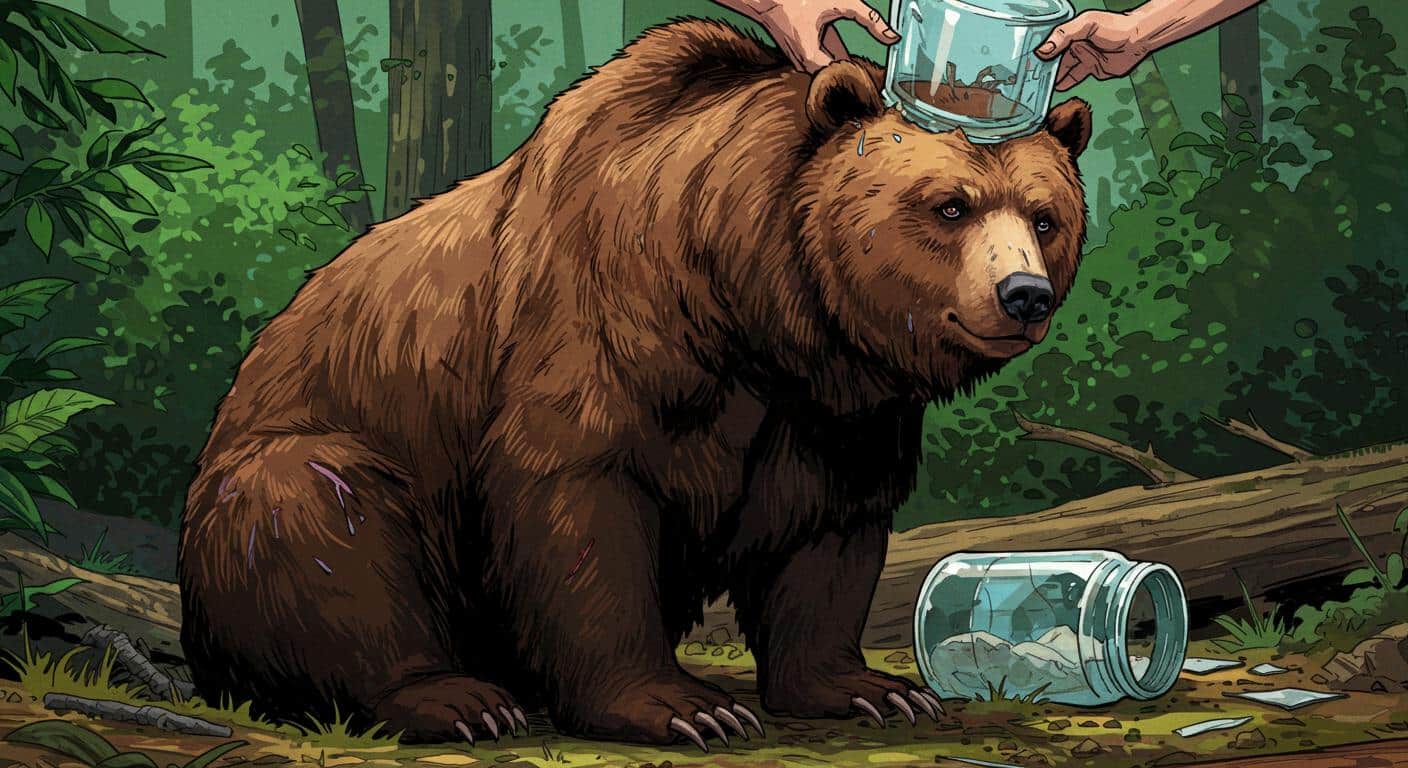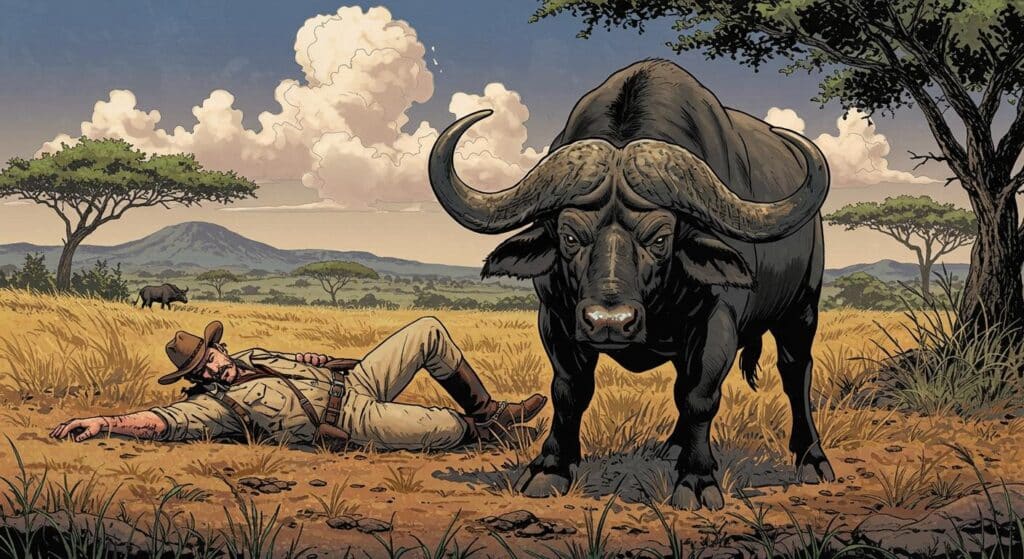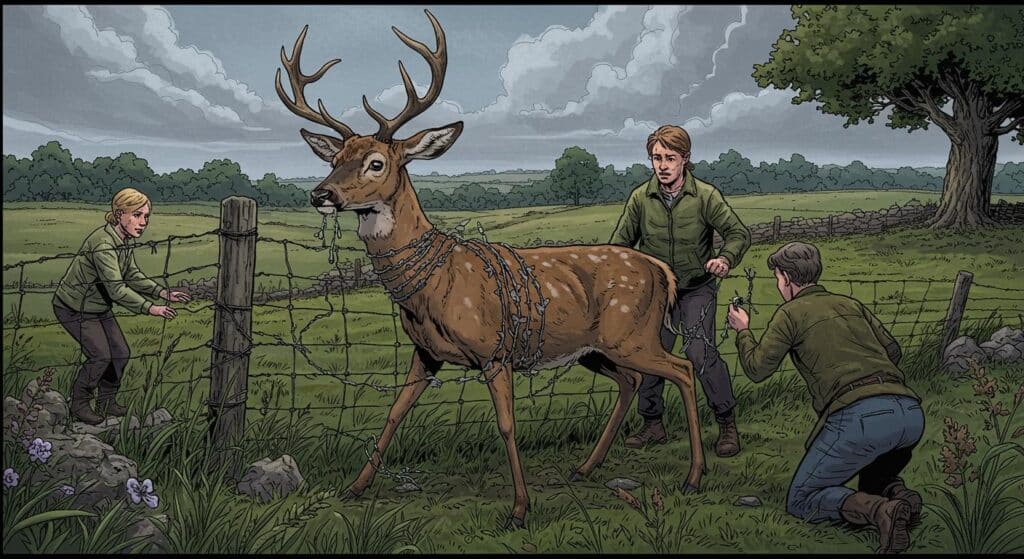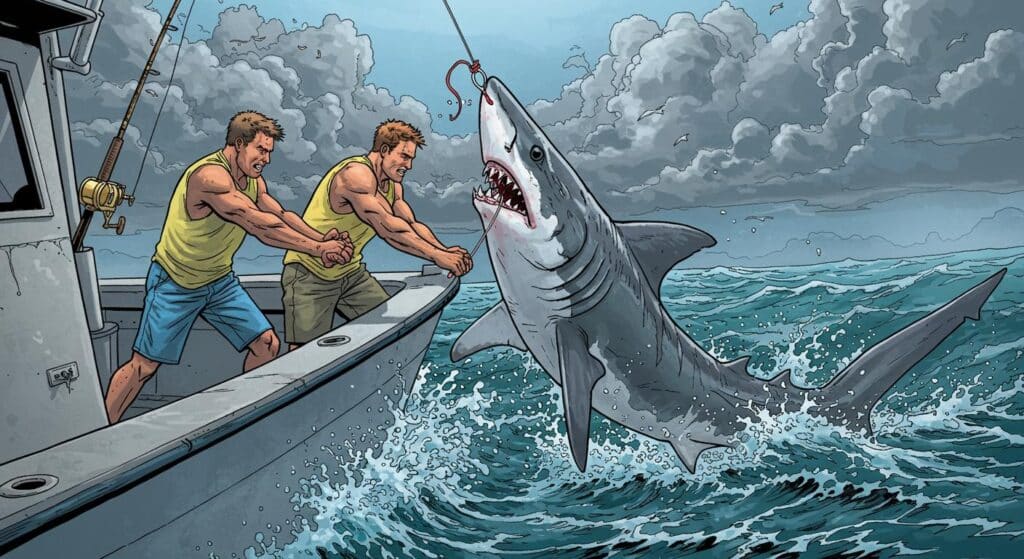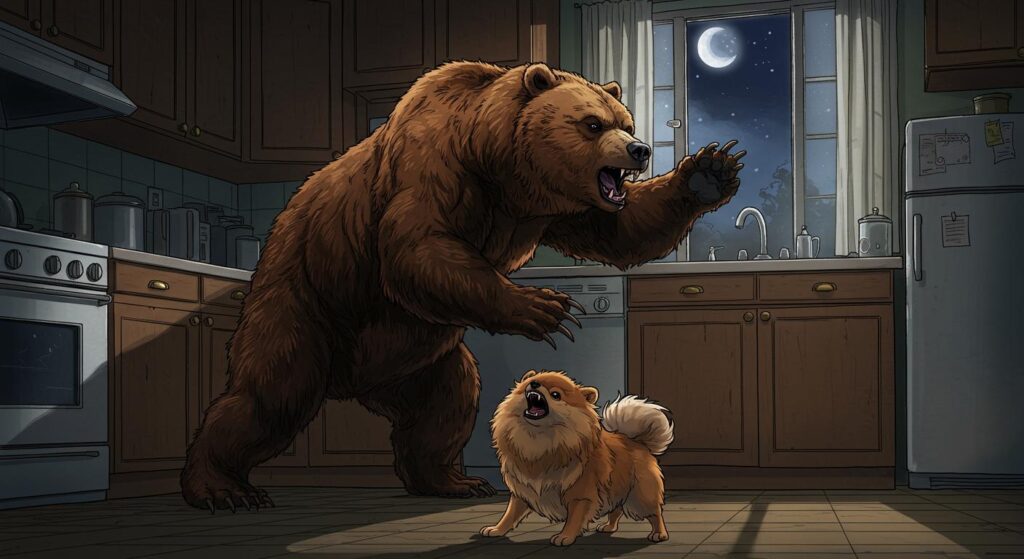Some people lose their keys; others misplace that reusable coffee cup. In Wisconsin this summer, someone apparently parted ways with a jumbo plastic jar, unwittingly launching a 70-pound bear into a weeklong and entirely unintended game of wearable container roulette. Not fable or meme, but reality: a two-year-old female black bear spent over a week traversing the northern part of the state with her head sealed inside what wildlife officials later described as a sizable, rigid jug.
The Jar Odyssey: Fifty Miles of Foraging Fumble
The bear’s reluctant journey as an ad hoc mascot for curbside recycling began on July 26, with reports trickling in from residents across Bayfield, Douglas, and Sawyer counties. According to UPI’s coverage, the bear covered nearly 50 miles over more than a week, her distinctive headgear generating a steady stream of calls to the Wisconsin Department of Natural Resources (DNR) and the U.S. Department of Agriculture’s Wildlife Services. Attempts to capture her with live traps came up empty—officials noted the bear’s daily movements were simply too unpredictable.
Jayme Morey, a medical coordinator with the Chequamegon Humane Association, recounted to 97X that area residents tracked the bear’s movement via neighborly word-of-mouth, with tips relayed about her location as she passed through local properties. “My immediate neighbor was like, ‘Hey, just heads up, here’s what’s heading toward your house,’” Morey recalled, noting that the collaborative effort of both homeowners and professionals kept the search alive.
Rescue Under Pressure and a Quick Return to Berry Business
Wildlife officials finally located the bear on private land near Cable, Wisconsin. Drawing from both UPI and 97X reporting, it’s clear the rescue effort required swift, coordinated action: the bear was safely tranquilized and the jar removed by USDA personnel. The DNR’s large carnivore specialist, Randy Johnson, told 97X that, despite over a week’s struggle, the bear managed to stay hydrated—though likely by dunking her jar-covered head into local lakes and streams. Cleanup time revealed the bear to be about 70 pounds, “dehydrated and underweight,” according to Morey, who added that a healthy bear of her age should tip the scales closer to 100–150 pounds for that time of year.
Fortunately, after removal of the container and a quick check for injuries, staff found her no worse for wear aside from lost pounds and mild dehydration. UPI and 97X both report that she was tagged with two colored ear markers for future identification and released back into a safe woodland area. “The good news is this is the time of year when food is most abundant,” Johnson observed, noting that with berries and other forage available, she should have a solid chance to recover before winter arrives.
Remarkably, 97X describes how, moments after release, the sow was already feasting on wild berries. For an animal that had spent days muffled—sight and smell dulled by rigid plastic—this must have felt like a return to sensory technicolor.
Teamwork, Tupperware, and Lessons Half-Learned
Both outlets stressed that the success of this rescue hinged on widespread public involvement. The DNR specifically credited vigilant residents for keeping tabs on the bear and consistently reporting new sightings. The Chequamegon Humane Association’s regular social media updates maintained public engagement, transforming the bear’s predicament from isolated oddity to communal concern almost overnight.
And yet, officials weren’t simply celebrating a job well done. As acknowledged in UPI’s summary and underscored by repeated DNR advice in 97X, incidents like this are preventable. Based on trends cited in both reports, wildlife professionals urge all residents to secure trash and properly dispose of or store containers that could attract bears—especially large, strong-smelling plastic containers that invite investigation by curious snouts. Similar entanglements have occurred before across Wisconsin and other parts of bear country.
The Plastic Trail: Accidental Exhibit, Ongoing Caution
So the story winds to its close: a fortunate bear, now foraging freely, and a container—whether recycled or destined for cautionary display—remains a testament to human forgetfulness. This episode leaves us with a wry reminder: what we discard, knowingly or not, can ricochet into the wild in the oddest ways.
Will it be the last time a bear finds itself wearing next month’s recycling? If history and the ongoing struggle for truly “bear-proof” living are any indication, probably not. You almost have to ask: in the modern woods, what’s rarer—a bear toting a plastic jug, or a neighbor who double-checks the bin before trash day?

